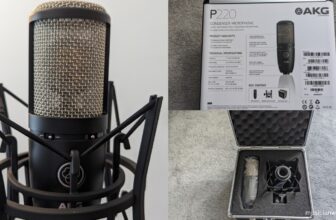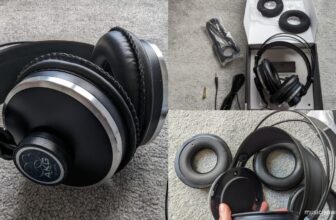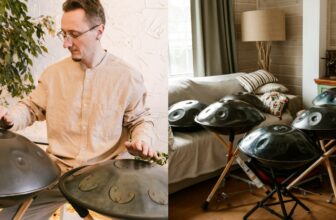What is a Double Drop?

In electronic dance music, a drop describes the moment in which a sudden change in the track takes place. A double drop is an advanced DJing technique in which the drop of two tracks is played simultaneously. Drops are usually highly energetic and introduced by a build-up section.
Double drops are most commonly associated with Drum N Bass, but they can be practiced by all kinds of DJs. For that reason, examples of double drops can be found in all genres of electronic dance music.
Easy to grasp as a concept, double-dropping is considered to be an advanced DJing technique. Dominating the art of the double drop is a distinctive feature of the best DJs in the world and may involve working simultaneously with as many as six decks.
Double-dropping is an old-school DJing technique, but it was made a lot easier by modern-day dj software such as Rekordbox and Traktor. Mastering the double drop using vinyl records requires a lot of know-how and an excellent sense of timing.
What’s a good example of a double drop?
The double drop in RL Grime’s EDC 2016 live set is one of the best I have ever heard.
A.M.C also has a six-deck DJ set that’s packed with high-quality double drops.
However, the Drum N Bass veteran Andy C is widely regarded as one of the first and most skilled promoters of the technique.
Other examples of major electronic dance music DJs that incorporate double drops into their live sets include DJ Blackley, Wilkinson, Noisia, and Sub Focus.
How to Make a Double Bass Drop
- Choose two or more tracks with drops that sound good together.
- Make sure you’re familiar with the structure of the tracks you’re using.
- Ensure that the drops of the tracks you’re using will play simultaneously.
- Apply EQ wisely for seamless transitions.
Let’s take a closer look at each of these four steps for a better understanding of what double-dropping is all about.
Step one: Choosing tracks that sound good together
A flawless taste in music is what separates brilliant DJs from skilled DJs. But knowing how to associate two or more tracks instinctively is almost as crucial. The best DJs in the world develop a sixth sense to identify tracks that will sound good together. However, mastering this skill may take years of experience and hard work.
Luckily, there’s an easier way around it. The best method for ensuring that two drops will work well together is by analyzing their BPM and key. If the BPM and key of two drops match, there’s a good chance they will sound good together. Keep in mind, though, that you should always test your double drops before playing live.
Paying attention to the frequency range of a drop is also essential. Drops that sound well together aren’t necessarily similar, much on the contrary. A drop with lots of low frequencies and a thumping four-on-the-floor kick, for instance, should be complemented by a drop containing syncopation and a few mid and high-frequency sounds.
Step two: Studying the structure of the tracks you’re using
Double drops don’t just come out of nowhere: like regular drops, they must be preceded by a build-up section. In the art of double-dropping, a good build-up can be as significant as a good drop, and that’s just one of the reasons why it’s so important to study the structure of the tracks you’re using to double-drop.
This doesn’t have to be an exhausting process. If you’re a DJ, there’s a good chance you already know the tracks you’re playing live from start to finish. But identifying the key moments in an electronic dance music track is nonetheless critical.
A good way to do so is by taking a look at a track’s frequency spectrum. The frequency spectrum will show you—among other things—the volume of each section of the track. This is a good guideline for quickly identifying drops, as they normally make for the loudest section of the song. In some cases, drops are preceded by a breakdown (i.e., a short, quiet section featuring either silence or a solo instrument), which makes it even easier to spot the drop.
Step three: Ensuring that the drops will play simultaneously
Once you have two or more tracks with drops and build-up sections that fit together, you need to ensure that they will play simultaneously. If you’re a vinyl-record DJ, this may be tricky. You need not only to have perfect knowledge of the structure of the tracks you’re using but also to count the bars that lead to the drop with nothing but your musical brain.
Luckily, you don’t have to be as ingenious to pull off a decent-sounding double drop using DJ software. After all, tools such as Traktor, Serato, or Rekordbox allow you to set cue points by bars. This means that all you have to do is identify the point at which the drop hits and set a cue point 8, 16, or 32 bars before the drop.
If the build-up sections of two or more tracks do not match, you can use the looping feature to sync the drops. There are good and bad examples of double drops, but a double drop that is not synced can sound downright awful. Make sure you practice your double drops before incorporating them into your live set.
Step four: Applying EQ for seamless transitions
Every DJ—from amateurs to pros—understands the importance of tweaking EQ to combine two or more tracks. Predictably, EQ also plays a pivotal role when it comes to double drops. When double-dropping, you should rely on EQ for at least two things: creating seamless build-up transitions and shaping the sound of the drop.
Using EQ in the build-up
EQ can be very useful for gently combining two or more build-up sections. Start by introducing the high frequencies with the fader/crossfader and add the other frequencies slowly before the drop. In some cases, you can even leave the low frequencies out entirely, as such will help to make the drop feel louder and more substantial.
Using EQ in the double drop
Wise use of EQ is also important for shaping double drops that sound cohesive. This is particularly significant when it comes to low frequencies. The basslines of electronic dance music tracks tend to sound similar; for this reason, playing two or more drops at full volume can harm the sound quality of your live set, as the basslines can phase-cancel each other.
To avoid this, choose the most powerful bassline of the two or more tracks you’re double-dropping with and reduce the low-frequency EQ of the others. You can also switch between basslines to create more dynamic double drops.
Summary
Double drops are a powerful tool in the DJ’s arsenal. Provided you know when to use them and how to do so without sounding gimmicky, your audience will surely notice the difference in sound quality.
Incorporating seamless double drops into your live set isn’t as easy as it sounds. But once you master this advanced technique, you may have what it takes to compete with the best DJs in the world.
Double drops combine already-powerful electronic dance music drops and take them to the next level. When you pull off a successful double drop, you will reach a new height of dance-music energy: in other words, there’s no better way to make a crowd go wild!





